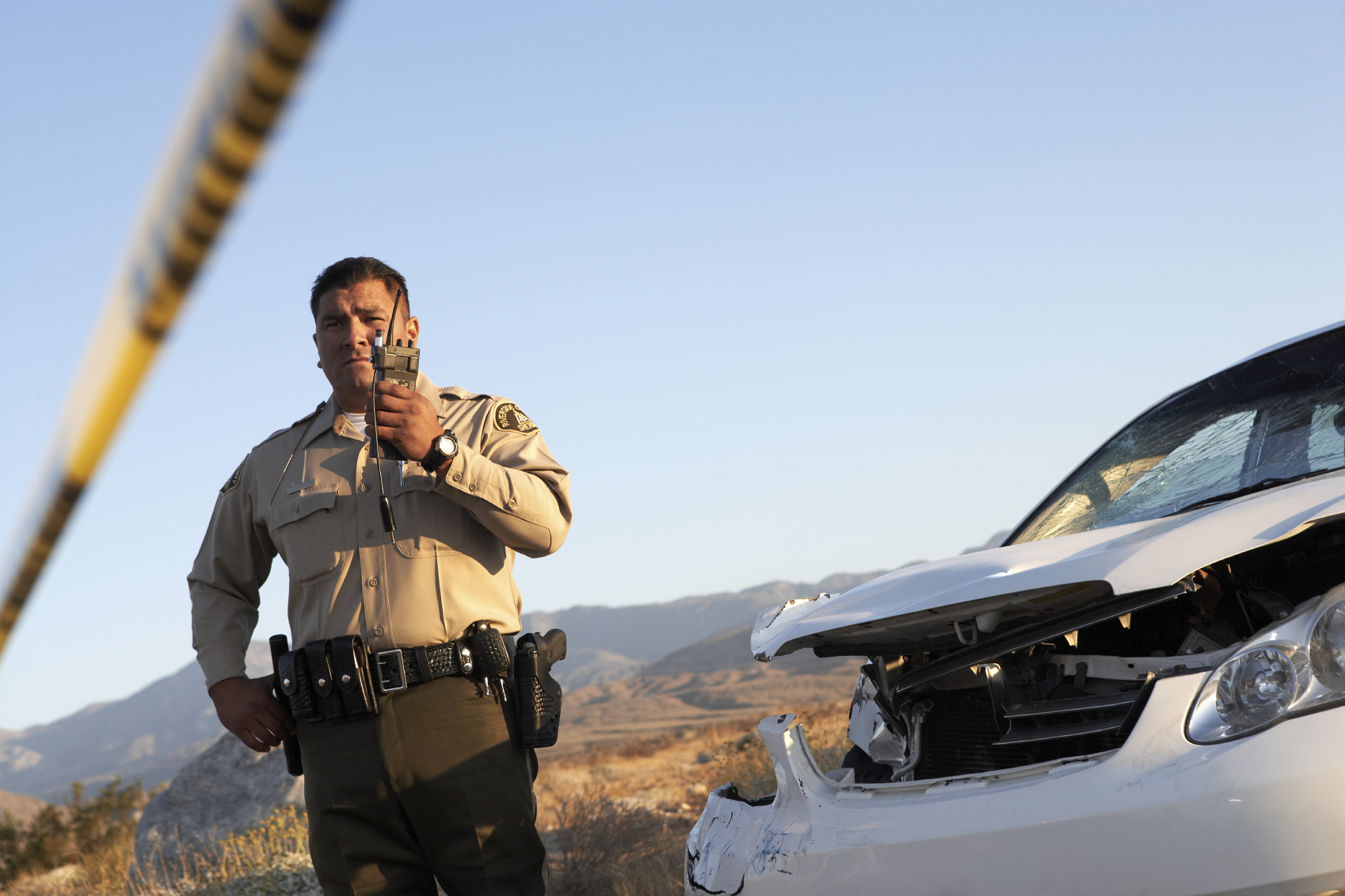
The whole idea of auto insurance can it be helps buy damages-to people, to vehicles, to stationary objects like fences and prevent signs-if you’re in an accident.
There are lots of moving parts in auto insurance-how coverage is priced, what is covered as well as what isn’t, and in what way claims impact the policy. Understanding a few of the intricacies will allow you to donrrrt better insurance consumer.
The Question of Fault
So you’re within the auto accident and you’re worried about whether your insurance costs are likely to get higher. Just like so much in life (and insurance), the response to this question is, “It depends.” The key consideration is if you’re seen to be “at fault” inside accident. (This can be handled somewhat differently in no-fault states. See below on an explanation.)
This cause police officers ought to called towards the scene of any car crash. The responding officers take statements and interview witnesses. In many more serious cases they’ll measure skid marks and diagram the accident scene to the very last glass fragment. After their investigation, they’ll make a determination regarding who caused the accident. Usually, a number drivers are offered traffic citations. The fault may very well be assigned entirely back to you, or it could be given to the opposite driver. Sometimes the fault is split-60/40, for instance, or 80/20-which means both drivers tend to be fault and definitely will ought to file an insurance claim. State laws vary about how this is often calculated.
In minor accidents, maybe a fender-bender in the parking garage, police might not exactly has to be called, nonetheless the parties involved should still exchange insurance information. When this happens, the insurance policy companies will continue to work together to view fault and handle the claim(s).
If other driver is found to obtain caused the accident, his or her insurance vendor will normally assume responsibility with the damage to property and medical expenses caused from the crash. Conversely, if you’re determined to be entirely or primarily in the wrong with the accident, your insurance firm can become covering any medical and property damages.
Surcharges, Discounts and Non-Renews
If you’re seen to be liable after a mishap, you’ll continue from the same rate until it’s time for it to renew your policy. Then, it’s likely that you’ll visit a rate hike in the form of a major accident surcharge. Additional accidents and you’ll see even higher rates.
In addition, if you have a clear driving history any time you bought a policy and you also provide an accident, the accident may affect you may in case you weren’t discovered to be at fault. If you are inside a “preferred risk program,” your online business is very likely to reclassify you towards a lower category. This will spark a pricing change as soon as your policy renews.
You may find your insurance cancelled (or “non-renewed”) for people with several accidents within the relatively shorter time period. It’s exactly about risk, but some companies have got a lower tolerance for risk as opposed to others.
A Few Exceptions
Fault can be a look at deciding who buys an accident-and whether your rates get higher. Alright, so what happens if you’re inside a two-car accident plus the other driver is decided for being liable – however the other driver doesn’t have insurance? This is when your uninsured motorist coverage kicks in. If you’re unclear whether you might have this type of coverage, talk to your agent today. Uninsured motorist coverage may be put into your plan for just pennies on a daily basis.
What if you’re in a state like Florida with low liability minimums? (Florida may be a 10/20/10 state, that means a motorist with minimum coverage merely has $10,000 of coverage for damage to property.) If somebody with Florida minimum insurance driving a $500 beatermobile crunches into the $30,000 Audi, niche on the damage can be paid by your under-insured motorist coverage. Again-you’d need to add under-insured motorist coverage for a policy early in advance. Otherwise, you’d need to seek to sue the other driver or simply spend on the damages yourself.
In both cases, you need to have the added insurance to be covered. Plus both cases-even even though you weren’t accountable for the accident-it’s likely that you’d lose your “accident free,” “good driver” or “claims free” discounts in your policy, that may cause your premium to rise.
(Moreover, insurance experts estimate that about 13% of all the drivers nationwide are driving not insured. In some states-Oklahoma, for instance-estimates of uninsured drivers are twice the nation’s average. Yikes!)
Things get even stickier if you’re included in a hit-and-run accident. Practically in most states, the damages towards your vehicle is protected by your uninsured motorist coverage. However, some states (California, Colorado, Georgia, Illinois, Louisiana and Ohio) actually prohibit uninsured motorist coverage from being used after the hit-and-run. For people with collision coverage and uninsured motorist coverage, it’ll likely cover your damages in the event the fleeing driver has never been identified.
It’s also entirely possible that that you claim that you are not accountable, but you’ll find yourself paying a larger premium about it. Road debris claims, for example, generally don’t carry any fault. But making a claim for repairs because of road debris can trigger a rate increase. Ultimately, if you file an insurance claim, you can anticipate a rate increase.
State Exceptions
Some states have passed laws that place limits on the way much an insurance provider can raise rates, or thresholds below which rates can’t be raised. By way of example, a state might have a law saying that your insurer can’t raise your rates if your total damage while in the accident is lower than $2,000. The sensible impact for this form of law is to cause insurers to make rates slightly for just anybody while in the state (as well as encourage repair centers to ensure that pretty much every covered repair costs not less than $2,000 to mend).
Talk to your independent insurance agent when you’ve got doubts about feel you’re insurance laws on your particular state.
No-Fault States
A few states (currently 12) have “no-fault” insurance laws. In no-fault states, injuries brought on by a car crash are covered by each driver’s insurance company-regardless of who caused or resulted in the accident. No-fault coverage is likewise known as “personal injury protection” or “PIP.” No-fault laws purport in order to safeguard both consumers and insurance vendors by providing a liability shield, restricting lawsuits for many people or most accident injury cases.
Notice the focus “injury.” No-fault insurance plan is generally limited by car accident claims caused from vehicle accidents, so property damage is handled separately. From a two-car crash by which drivers and passengers are injured both in vehicles, the injured in every car will be taught in insurance policy of the individual driver. Nevertheless the drivers could still sue each other (or each other’s insurance vendors) with the difficulties for their vehicles and for bodily injury after dark accidental injuries limits. Or they might make a claim against his or her collision coverage, with regard to their vehicle, when they have been it.
The no-fault rules don’t signify your premiums can’t still range in price up after a crash. It’s basically around your insurance provider, usually dependant upon the exact amount there’re shelling out during the claim.
If your home is at one of the no-fault states, it’s worth meeting with your independent agent with what happens if you’re in an accident. Right now, the?current no-fault states include Colorado, Florida, Hawaii, Kansas, Kentucky, Massachusetts, Michigan, Minnesota, Nj-new jersey, The big apple, North Dakota, Pennsylvania, and Utah.
Accident Forgiveness
Many major insurers have something called “accident forgiveness”-you’ve probably seen the TV commercials. Accident forgiveness means that in the event you preserve a clean record, your insurance carrier won’t?lift up your premium in case you have an individual accident. Whether it’s included as a built-in feature or offered as a possible add-on available, this coverage is not really free. Instead, the cost of an occasional call accident is rolled for your premiums being an added expense. It may, however, try to keep your premium level whenever you’ve got that first accident.
Accident forgiveness is an excellent advertising tool for insurance carriers, also it can also be an optimistic value-add for consumers who’ve just one black mark on an otherwise spotless record. If this comes within an extra charge, you’ll must run the numbers with the agent to discover whether it’s actually worth the added cost.
Strategies to your Accident-Prone
The threat of higher rates is equipped with one positive effect – it’s a robust incentive for careful driving. Some accidents can’t be prevented, but defensive driving practices will help protect yourself, your passengers, plus your pocketbook. This incentive entails that safe drivers are usually rewarded with discounts assuming they avoid claims and citations.
Bottom line-any claim you’re making, whether you’re liable or not-has the chance to cause your rates to go up into. You should consider within the claim is undoubtedly your driving history with your insurance company’s pricing policies. The great news is, if you think maybe your rates go up unreasonably high, you can always ensure you get your independent agent to search around to get a new company. A person always has options.








